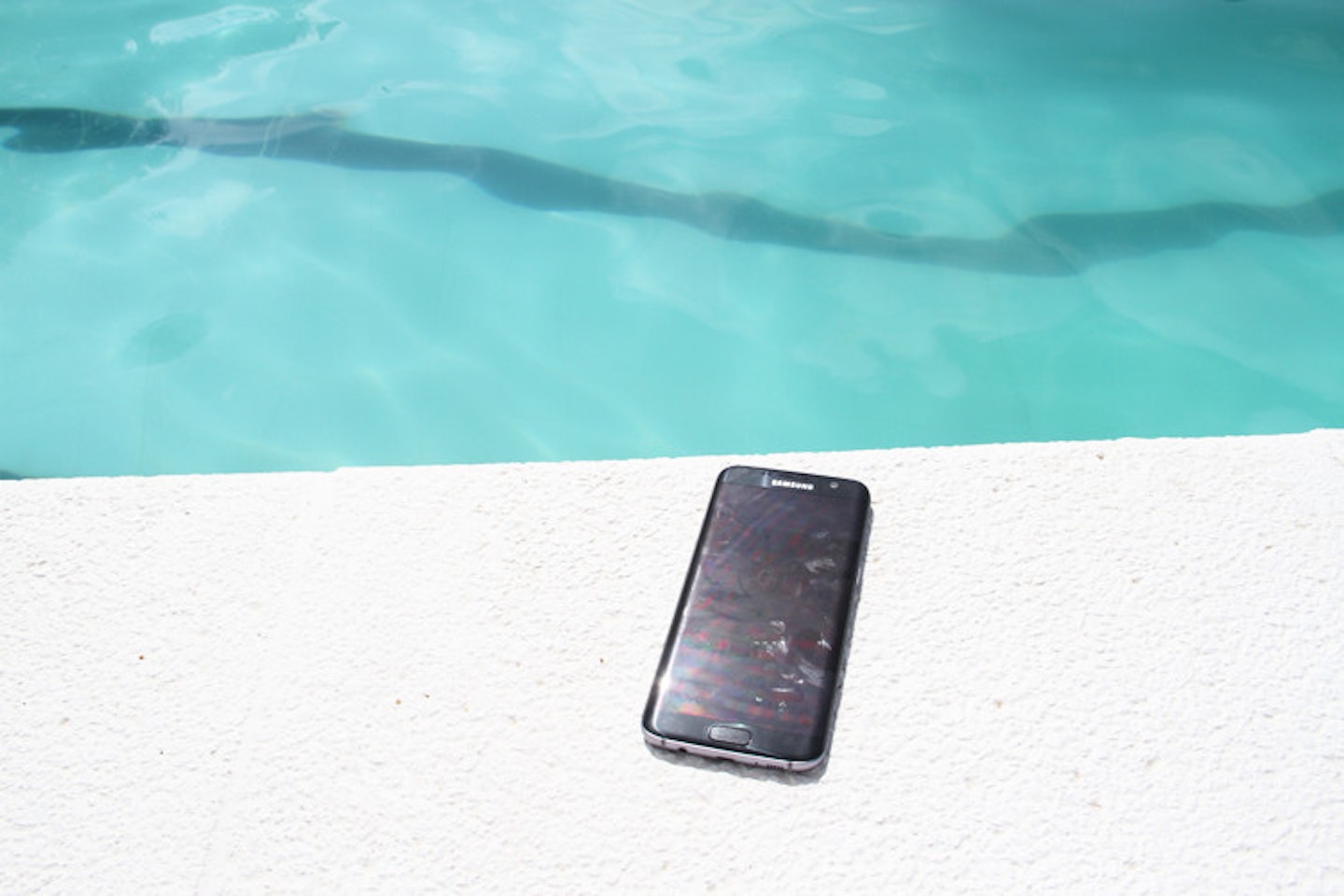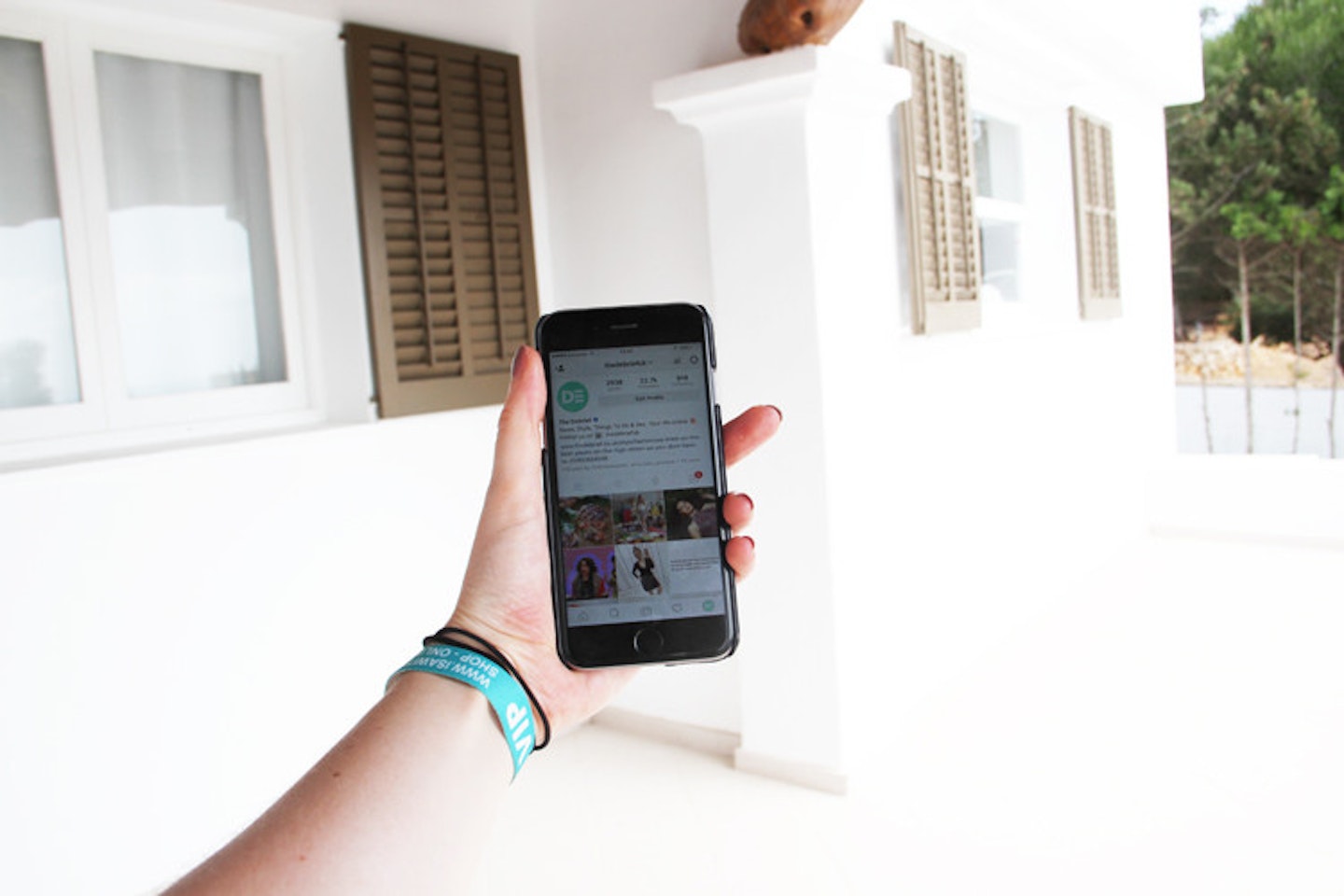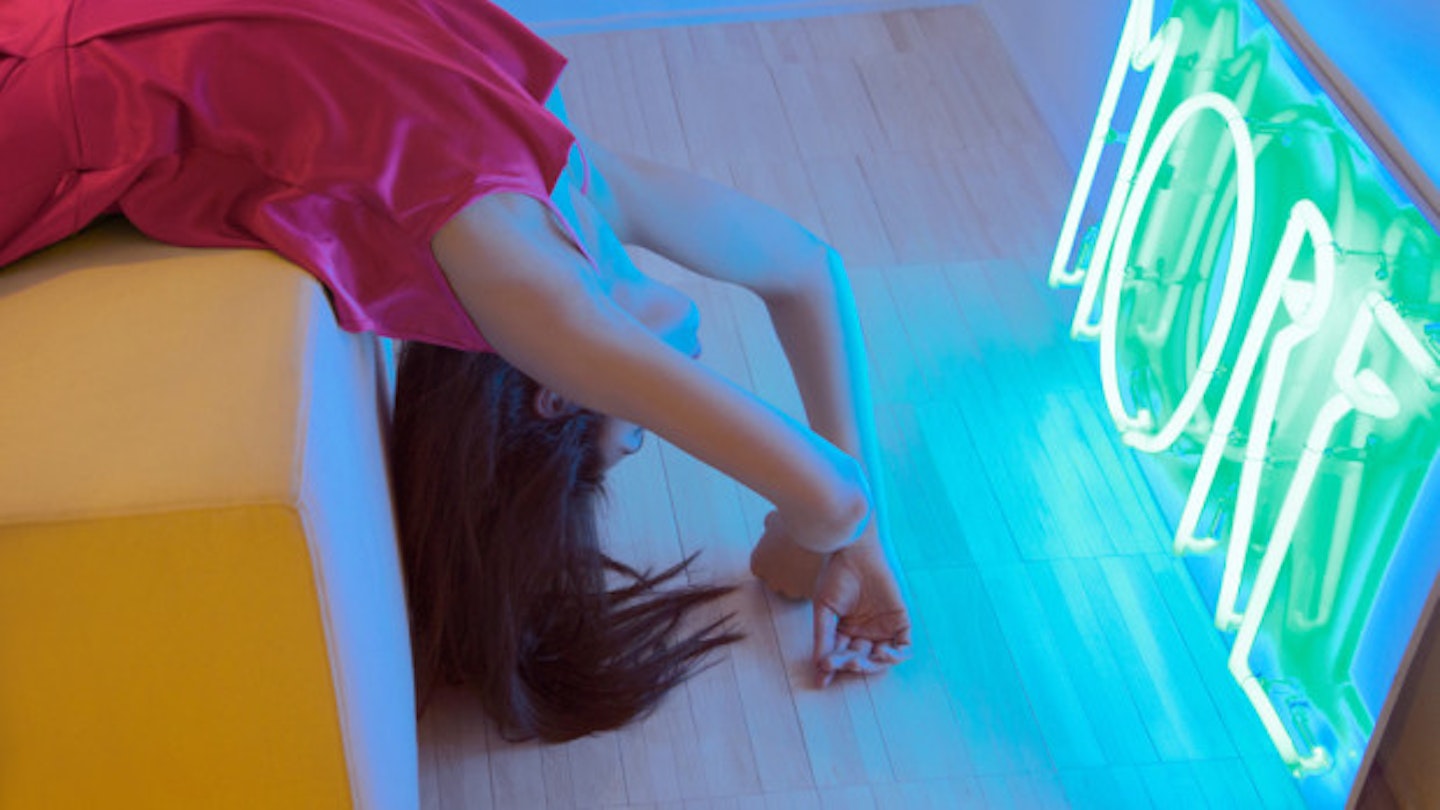Instagram stories, Vines, Snapchat, those Facebook videos that automatically play as you scroll down down your news feed . Our social media output and consumption is now defined by the moving image - and everyone is an amateur director, cinematographer and producer of the film that is their life. And according to one recent study, the average adult in America consumes 5.5 hours of video a day and by the end of last year, Facebook was seeing 8 billion video views a day.
But what is it about live-streamed video that makes it so difficult to turn off? And more pertinently, why do we all feel the need to say something when in reality there’s not much to say at all?
When Instagram Stories launched in the Halcyon days of last month, I eye rolled and loudly sighed when I realised what the little circles on the top of my Instagram news feed meant. Even as someone who regularly updates and checks Instagram (clicking on the orange and purple camera icon on my phone in between meetings, and as soon as I wake up in the morning), my initial reaction was one of fatigue. I was instantly exhausted by the that there was yet another way to produce content - another thing to keep up with.

A few weeks on, I’m now providing my modest number of followers on Instagram with full disclosure when it comes to what I’m seeing and doing via Stories. But where does our (my) compulsion to document every moment of our lives with a moving image and share it with our friends come from? It’s certainly a lot more satisfying than posting a boring old still image (so 2015) but why?
According Psychologist Dr. David Giles a lot of this is down to good, old-fashioned FOMO. ‘If everyone seems to be talking about a particular media phenomenon and someone isn’t already a user of the medium where that phenomenon is located, they will soon adopt it – and if they find all their friends on board they will stick with it. We get hooked because we want to keep up with our peers.’
Peer pressure and a desire to keep up with the Joneses, it seems, affects us all throughout our lives and it’s this that social media companies are tapping into with live streaming via the likes of Instagram, Periscope and Snapchat – our inherent need to be plugged in to what other people are doing. As aren’t we all doing what Foucault pointed out decades ago just only online- to show the ideal and perfect lives we lead? Was Hyacinth Bouquet peeping at her neighbours and making notes on what sort of furniture they had really any different to your scroll through that Instagram stories roll? Dr Giles certainly sees it this way, he argues these developments are reflective of our competitive nature to be ahead of the latest trends. He reminded me that these multifaceted ways of talking, showing or just being online and out there were not invented to fulfil a need. He gave me 1960s media theorist Marshall McLuhan’s example of the car: anything can be given meaning through human use and then later decided that it’s one of life’s essentials.
Lydia Pang, Brand Aesthetics Director at Anomaly sees “gramchat” as an extension of ourselves. She sees “Instastories” as resembling “diaries...a place to be honest and distinctive and silly without considering the aesthetic of my account”. As a branding pro, she also uses it as a device to see how other brands are working. Lydia gave her favourite example of US Vogue’s Anna Wintour coming out of an elevator turned live Instagram studio as her opening for the Met Gala 2016, where the theme was rather fittingly Manus x Machina.
And also… we’re just really nosey, aren’t we? ’Stories brings back the voyeuristic edge that social media has lost through it's growing curation,’ explains Pang.

In a recent study conducted by UCLA’s brain mapping centre, an experiment using a MRI scanner with thirty-two teenagers scrolling through a bespoke app resembling Instagram showed activity in their brain’s reward centre. It was the first study of its kind. They found that the same brain circuits which are activated by eating chocolate and winning money were activated giving a dopamine high when the teenagers saw likes on their own photos or on social media. With this sense of belonging, our brain registers all those red hearts and likes like a hug.
Of course anyone who’s ever experienced that warm tingle of getting more likes than normal on an Instagram post knew this already - but what is it about live streaming in particular that really gets the pleasure sensors going? Is video truly addictive?
‘Videos are more attracting than images because they are more complex objects and we are more interested in complex objects than simple ones,’ says psychologist Ben Voyer. ‘They are easier to project into as well - in sum they project a richer medium, and hence receive more attention.’
But it’s not just about how our brain responds to the moving image. As already established - fundamentally, we’re just really nosey, as Voyer goes on to explain. ‘What is more interesting psychologically speaking is the “live” dimension, which exerts a fascination on people. More specifically, being able to watch something through a live stream is like a 2.0 version of being a spy - that is we can see without being seen. It also tackles with our evolutionary mind, where we focus on an event, ready to make a decision. Often live streams feature dramatic or attention grabbing events, and our mind gets hooked to the idea that something extra ordinary could happen anytime. We don’t want to switch off, in case something could happen. In sum, we don’t want to miss out!’ Interestingly, Voyeur notes that while some cognitive research has been conducted on this front, there have been few neurological studies.
‘The proposition that television can be addictive is proving to be more than a glib metaphor. The most intensive scientific studies of people’s viewing habits are finding that for the most frequent viewers, watching television has many of the marks of a dependency like alcohol and other addictions.’ These were the opening lines of a 1990 New York Times report on the perils of Television addiction. In it, they quoted ‘self described addicts’ who claimed they watched 56 hours of television a week. This was meant to be shocking at the time, but think about the amount of time we all spend mindlessly scrolling through feeds filled with lifestream feeds, clicking through YouTube videos or staring at stranger’s Snapchats. Even if you never watch TV in the evenings, add all of that together, and you’d probably get a lot closer to that 56 hours a week mark than you’d first imagine.
And while social media isn’t TV, in the 1990 sense, because it’s not embodied by a large inanimate object sitting in the corner of your living room. But what Snapchats, YouTubes and now Instagram Stories represent are windows into people’s real-life worlds. They’re soap operas, coming out of your phone, available for you watch on the bus, in the bath, or at your desk if you happen to have a computer screen that doesn’t face out into the office. ‘Once I start looking at Snapchats, I can’t stop - I’ll watch them while I’m eating my dinner, and I definitely watch YouTube more than I watch Netflix,’ explains Chemmie, The Debrief’s fashion and beauty editor. ‘It feels quick and convenient, it’s always on my phone and there’s always more of it, so you just keep clicking on things…’
‘You get access into other people’s lives with a video - a picture doesn’t feel like you’re getting the same access. And we’re all inherently nosey, aren’t we?’ adds The Debrief’s social media Alyss, staring at live video streams is in her job description.
But you can’t hide in a video - or certainly not as well as you can hide in a perfectly filtered Insta-pic anyway. Maybe the less curated, more rough-and-ready aesthetic that comes from live streaming will even out the aspiration playing field? As much as I have tried to be critical of live streaming, it does actually seem to be bringing intimacy back to a space which had become somewhat cold – polished and heavily curated.
And of course, not all live streaming is created equal. Saskia Watts, a twenty two year old, Publishing Media graduate- one who you would assume is at the top of her game with live streaming, says she does not contribute Instagram ‘Stories’ but uses Snapchat. Speaking out about the not-so-spoken classism around the two apps, she says Instagram ‘Stories’ are a “high brow rose tinted version” of reality. Unlike Snapchat where you can take a snap of yourself regardless of what you may look like and usually, to a closer knitted community.
It’s easy to get into a moral panic about live streaming and the future of video on social media. Remember when television was invented and everyone thought we’d become square-eyed zombies? And it’s trendy but probably very shortsighted to dismiss those who regularly post on social media, or, more to the point, make a living form it - surely this is an extension of what we’ve always done with gossip columns, tabloid newspapers and society magazines?
Back in 1993, before reality TV dominated TV schedules and way ahead of social media becomming our main means of expression and mode of communication the writer David foster Wallace penned an essay titled E Unibas Pluramvoicing his concerns and criticisms of what he saw as the increasingly voyeuristic and banal direction our culture was headed in. He wrote that TV "provides illusions of voyeurism and privileged access,” without the awareness or repercussions of snooping on another person's tooing and frooing in real life. He speculated tht the draw for many people was that they could observe and critique the lives of others from the safety of their own living room. However, it was this which he felt would stop TV ever truly becoming an art form. When you observe someone who knows they're being observed, he wrote, what you see isn't reality. It's a scripted and curated version of reality. As Foster Wallace saw it television - and by extension it could be argued that reality TV and now live streaming - is performance: “the people we’re watching through TV’s framed-glass screen are not really ignorant of the fact that somebody is watching them … Television does not afford true espial because television is performance, spectacle, which by definition requires watchers.”
But what has changed is that now everything happens in real time it means that there’s (forgive me) no filter. No moment to take a step back and a deep breath before you’re bombarded with information. Technology feeds a societal desire to talk, share information and gossip, of course. But 5.5 hours a day does sound a little scary when you put it like that. Maybe we need to remember to take a break from time to time - and remind ourselves that there is a life beyond our screens. It might not be perfectly curated or scripted, but it's very much there.
Like this? You might also be interested in:
Ask An Adult: Why Can't I Concentrate In An Open Plan Office?
Follow Tahmina on Twitter @tahminaxbegum
This article originally appeared on The Debrief.
